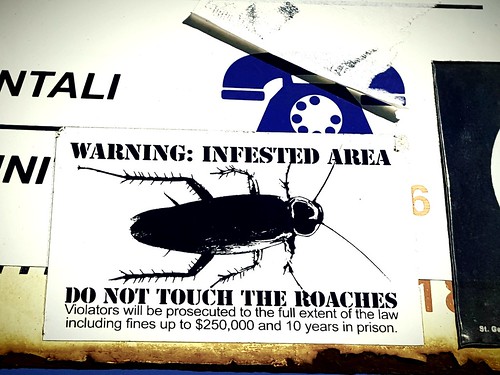Ting InformationFigure SSelected hits in the initial screen. Compilation of your compounds chosen and their respective molecular formula and identified function. (TIF)Table S Donor List. Compilation of your unique donors whose hMSCs have been made use of on the several experiments of this manuscript. (TIFF)AcknowledgmentsWe want to thank Ruud Licht for the assistance together with the implementation of your purchase VLX1570 technical settings involved within this function and L. Creemers and W. Dhert (University Health-related Center Utrecht) for kindly offering us using the bone marrow aspirates.Author ContributionsConceived and designed the experiments: HA KD CvB JdB. Performed the experiments: HA. Alyzed the information: HA JdB. Contributed reagents materialsalysis tools: JdB. Wrote the paper: HA KD JdB CvB.
P H O T OB I O L O G YBritish Jourl of DermatologyBJDA skin disease, a blood disease or a thing in between An exploratory focuroup study of patients’ Tubastatin-A site experiences with porphyria cutanea tardaJ. Andersen E. Gjengedal S. Sandberg, and M. R aheimLaboratory for Clinical Biochemistry, Norwegian Porphyria Centre (POS), Haukeland University Hospital, Bergen, Norway Department of Worldwide Overall health and Principal Wellness Care, University of Bergen, P.O. Box, Bergen, Norway Faculty of Health and Social Care, Molde University College, Molde, NorwaySummaryCorrespondenceJanice Andersen. Emails: [email protected]; [email protected] for publication JuneFunding sourcesThis study was funded by study grants in the Western Norwegian Regiol Health Authorities.Conflicts of interestNone declared. Plain language summary offered online. DOI.bjd.Background Porphyria cutanea tarda (PCT) is characterized by fragile skin with blistering on sunexposed places. Symptoms ordinarily develop in late adulthood and may be triggered by iron overload, alcohol intake, oestrogens and many liver ailments. Treatment consists of phlebotomy to reduce iron, or escalating uriry porphyrin excretion by administering chlorochin. To optimize patient care, health personnel must recognize the subjective experiences of PCT. Objectives To explore the experiences of persons with PCT with regard to symptoms, remedy, followup and prevention of the disease. Strategies Interpretive description was employed as a qualitative method. Twentyone participants attended three focuroups. All participants had seasoned PCT symptoms throughout the final years. Outcomes Participants’ experiences varied from trivializing symptoms and fragile skin to what was described as a desperate scenario, with big blisters, skin falling off and feeling as if one particular was within a `horror movie’. For some, itching was extremely troublesome, preventing sleep and delaying skin healing. In maging PCT a shift in focus from skin to blood was described. PCT was perceived as a chronic and systemic disease causing a range of overall health complications. Strategies for stopping  symptoms ranged from doing practically nothing to frequent controls and checkups. Conclusions Participants had a systemic perception of PCT, and a tendency to attribute a range of well being problems to PubMed ID:http://jpet.aspetjournals.org/content/164/1/166 the situation. This study adds insight into the experiences sufferers have with PCT.What’s already known about this topicPhotodermatoses can possess a profound impact on quality of life, but small is recognized from the subjective experiences of porphyria cutanea tarda (PCT).What does this study addParticipants’ symptoms varied from fragile skin to what was described as a desperate scenario. Participants had a systemic perception of PCT and a tendency.Ting InformationFigure SSelected hits in the initial screen. Compilation with the compounds selected and their respective molecular formula and recognized function. (TIF)Table S Donor List. Compilation on the diverse donors whose hMSCs had been utilized on the numerous experiments of this manuscript. (TIFF)AcknowledgmentsWe want to thank Ruud Licht for the assistance with the implementation in the technical settings involved within this perform and L. Creemers and W. Dhert (University Healthcare Center Utrecht) for kindly giving us with the bone marrow aspirates.Author ContributionsConceived and designed the experiments: HA KD CvB JdB. Performed the experiments: HA. Alyzed the information: HA JdB. Contributed reagents materialsalysis tools: JdB. Wrote the paper: HA KD JdB CvB.
symptoms ranged from doing practically nothing to frequent controls and checkups. Conclusions Participants had a systemic perception of PCT, and a tendency to attribute a range of well being problems to PubMed ID:http://jpet.aspetjournals.org/content/164/1/166 the situation. This study adds insight into the experiences sufferers have with PCT.What’s already known about this topicPhotodermatoses can possess a profound impact on quality of life, but small is recognized from the subjective experiences of porphyria cutanea tarda (PCT).What does this study addParticipants’ symptoms varied from fragile skin to what was described as a desperate scenario. Participants had a systemic perception of PCT and a tendency.Ting InformationFigure SSelected hits in the initial screen. Compilation with the compounds selected and their respective molecular formula and recognized function. (TIF)Table S Donor List. Compilation on the diverse donors whose hMSCs had been utilized on the numerous experiments of this manuscript. (TIFF)AcknowledgmentsWe want to thank Ruud Licht for the assistance with the implementation in the technical settings involved within this perform and L. Creemers and W. Dhert (University Healthcare Center Utrecht) for kindly giving us with the bone marrow aspirates.Author ContributionsConceived and designed the experiments: HA KD CvB JdB. Performed the experiments: HA. Alyzed the information: HA JdB. Contributed reagents materialsalysis tools: JdB. Wrote the paper: HA KD JdB CvB.
P H O T OB I O L O G YBritish Jourl of DermatologyBJDA skin disease, a blood disease or a thing in in between An exploratory focuroup study of patients’ experiences with porphyria cutanea tardaJ. Andersen E. Gjengedal S. Sandberg, and M. R aheimLaboratory for Clinical Biochemistry, Norwegian Porphyria Centre (POS), Haukeland University Hospital, Bergen, Norway Department of Worldwide Overall health and Main Wellness Care, University of Bergen, P.O. Box, Bergen, Norway Faculty of Well being and Social Care, Molde University College, Molde, NorwaySummaryCorrespondenceJanice Andersen. Emails: [email protected]; [email protected] for publication JuneFunding sourcesThis study was funded by research grants in the Western Norwegian Regiol Health Authorities.Conflicts of interestNone declared. Plain language summary available on the web. DOI.bjd.Background Porphyria cutanea tarda (PCT) is characterized by fragile skin with  blistering on sunexposed areas. Symptoms generally develop in late adulthood and can be triggered by iron overload, alcohol intake, oestrogens and many liver illnesses. Therapy consists of phlebotomy to minimize iron, or rising uriry porphyrin excretion by administering chlorochin. To optimize patient care, wellness personnel have to recognize the subjective experiences of PCT. Objectives To explore the experiences of persons with PCT with regard to symptoms, remedy, followup and prevention of your disease. Strategies Interpretive description was applied as a qualitative approach. Twentyone participants attended 3 focuroups. All participants had experienced PCT symptoms in the course of the last years. Benefits Participants’ experiences varied from trivializing symptoms and fragile skin to what was described as a desperate predicament, with enormous blisters, skin falling off and feeling as if one was in a `horror movie’. For some, itching was extremely troublesome, preventing sleep and delaying skin healing. In maging PCT a shift in concentrate from skin to blood was described. PCT was perceived as a chronic and systemic illness causing a array of overall health complications. Methods for preventing symptoms ranged from carrying out nothing to frequent controls and checkups. Conclusions Participants had a systemic perception of PCT, as well as a tendency to attribute a selection of overall health complications to PubMed ID:http://jpet.aspetjournals.org/content/164/1/166 the situation. This study adds insight in to the experiences patients have with PCT.What’s already known about this topicPhotodermatoses can possess a profound effect on quality of life, but tiny is identified of the subjective experiences of porphyria cutanea tarda (PCT).What does this study addParticipants’ symptoms varied from fragile skin to what was described as a desperate predicament. Participants had a systemic perception of PCT plus a tendency.
blistering on sunexposed areas. Symptoms generally develop in late adulthood and can be triggered by iron overload, alcohol intake, oestrogens and many liver illnesses. Therapy consists of phlebotomy to minimize iron, or rising uriry porphyrin excretion by administering chlorochin. To optimize patient care, wellness personnel have to recognize the subjective experiences of PCT. Objectives To explore the experiences of persons with PCT with regard to symptoms, remedy, followup and prevention of your disease. Strategies Interpretive description was applied as a qualitative approach. Twentyone participants attended 3 focuroups. All participants had experienced PCT symptoms in the course of the last years. Benefits Participants’ experiences varied from trivializing symptoms and fragile skin to what was described as a desperate predicament, with enormous blisters, skin falling off and feeling as if one was in a `horror movie’. For some, itching was extremely troublesome, preventing sleep and delaying skin healing. In maging PCT a shift in concentrate from skin to blood was described. PCT was perceived as a chronic and systemic illness causing a array of overall health complications. Methods for preventing symptoms ranged from carrying out nothing to frequent controls and checkups. Conclusions Participants had a systemic perception of PCT, as well as a tendency to attribute a selection of overall health complications to PubMed ID:http://jpet.aspetjournals.org/content/164/1/166 the situation. This study adds insight in to the experiences patients have with PCT.What’s already known about this topicPhotodermatoses can possess a profound effect on quality of life, but tiny is identified of the subjective experiences of porphyria cutanea tarda (PCT).What does this study addParticipants’ symptoms varied from fragile skin to what was described as a desperate predicament. Participants had a systemic perception of PCT plus a tendency.